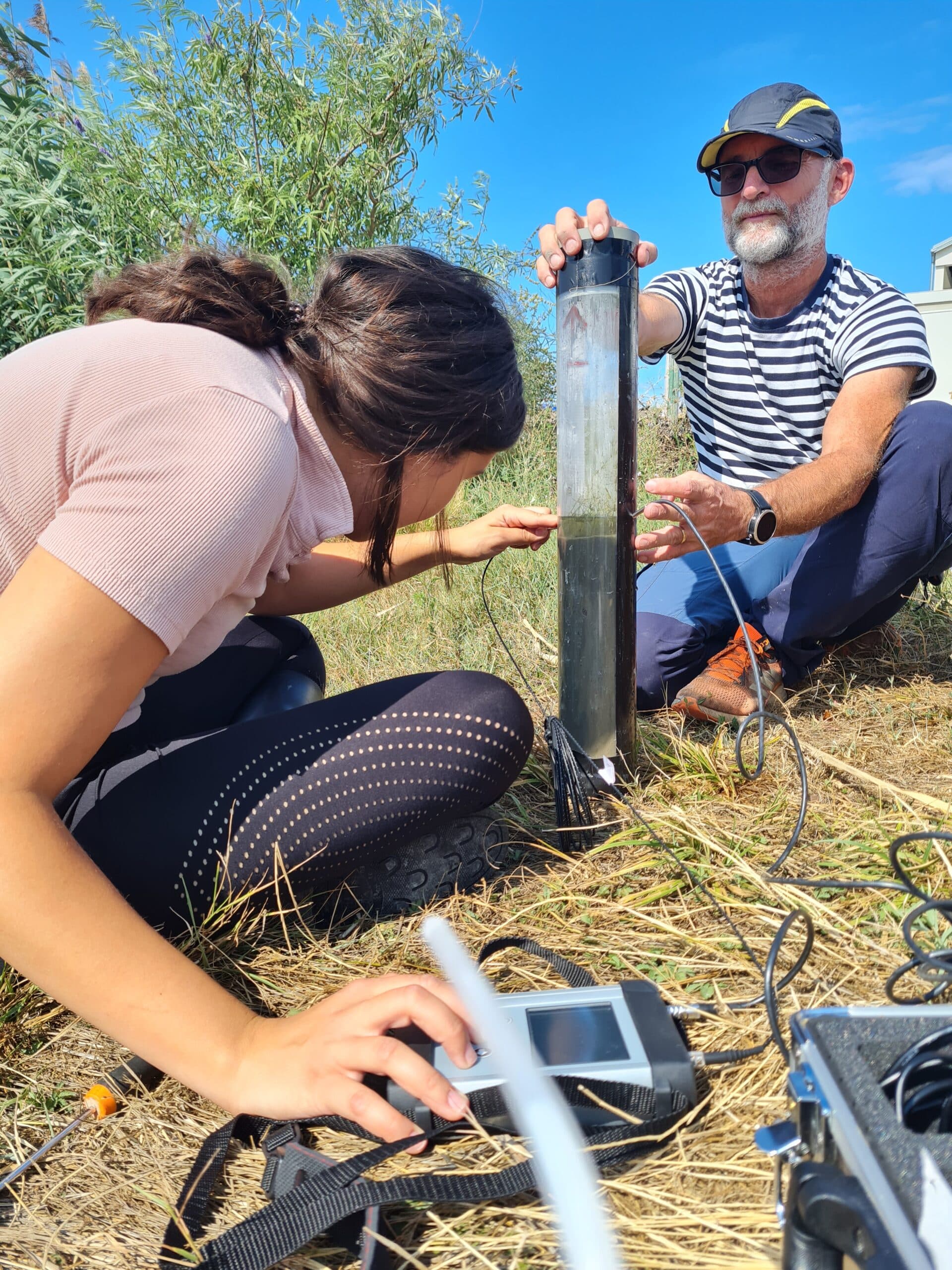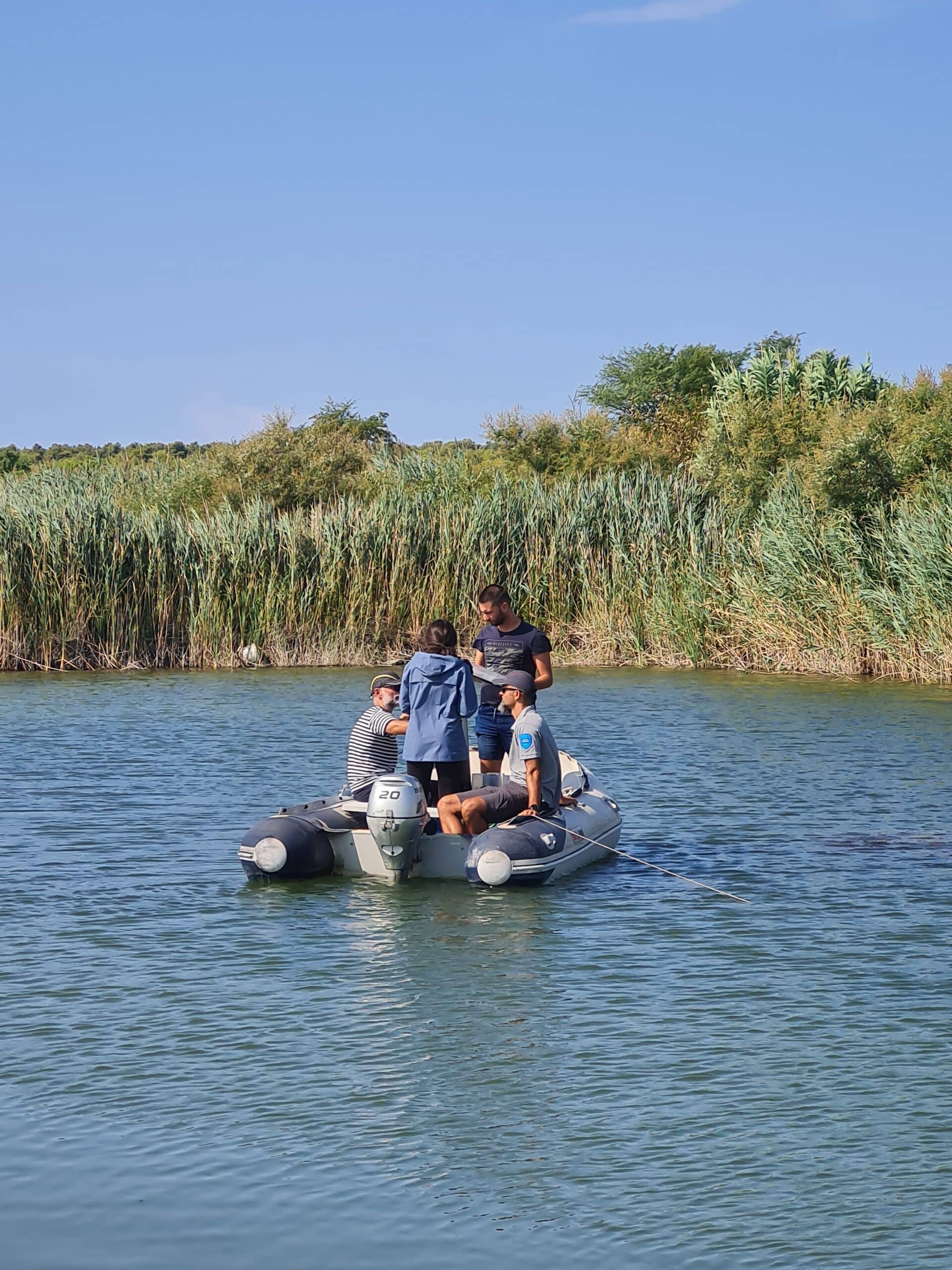With the start of the summer holidays, many Austrians are drawn to the Croatian Adriatic coast – bringing them in the vicinity of Lake Vrana, Croatia’s largest natural lake, found in the nature park of the same name. But while the lake appears to be an idyllic retreat for holidaymakers, researchers see a different story unfolding beneath the surface. In a study recently published in the journal Environmental Microbiome, scientists from the Environment and Climate Research Hub at the University of Vienna and the Ruđer Bošković Institute in Zagreb, demonstrate for the first time how climate change is driving the salinisation of freshwater lakes – with potentially far-reaching consequences for both biodiversity and the global climate.
How Seawater affects life in a freshwater lake
Increased heat and draught have led to falling water levels in Lake Vrana, while salt water is increasingly seeping into the lake through the porous limestone barrier that separates the lake from the sea. This salinisation is slowly changing the microbial communities in the lake sediment – with direct effects on the methane cycle:
The salinisation is accompanied by an increase in sulphate concentration – and therein lies the decisive piece of the puzzle: sulphate reducing bacteria displace methane formers, therefore promoting anaerobic oxidation of methane (AOM), a process in which methane is broken down in the absence of oxygen.
“We were able to show that a type of methane pocket forms in the sediment, in which methane is stored. This means that the methane no longer enters the atmosphere unhindered, which was surprising for us,” explains study leader and ECH member Petra Pjevac. Around 50 % of global methane emissions come from aquatic ecosystems, of which freshwater lakes normally contribute up to 53 %. The fact that salinisation potentially reduces these emissions sounds positive at first – but it comes at a high price.
What looks good on the surface…
“What sounds good in terms of climate policy is ecologically problematic,” emphasises Pjevac. Studies in marine ecosystems have already shown that salinisation upsets the ecological balance – and similar processes are now occurring in freshwater lakes, the effects of which have barely been researched.
The consequences ripple out across the food web, threatening bird populations and other wildlife that depend on the lake’s ecosystem. Pjevac’s team analysed the chemical composition of the sediment and the genetic characteristics of the microorganisms. The results:
- In salinised sediments, sulfate reducers such as SEEP-SRB1 and -SRB2, which degrade methane together with ANME-1 archaea, dominate.
- In non-saline areas, methane formers and aerobic methane degraders, typical of freshwater sediments, predominate.
- Despite salt stress, many microorganisms show no genetic adaptations, but use known strategies for osmoregulation, e.g. by producing proline or trehalose.
A glimpse into the future of our lakes: what needs to be done?
The results show us that seasonal salinisation has profound effects on both microbial processes and the global methane balance. In order to protect lakes from reaching the same fate as lake Vrana, the researchers are calling for increased monitoring of salinising inland waters, sustainable water and land management that limits seawater input, and more research into the effects of salinisation in freshwater systems.
The geological conditions make Lake Vrana an ideal model for research into climate-induced changes in coastal lakes – and a warning signal that should be taken seriously. “Our research helps to understand how sensitively microbial life reacts to environmental changes and how closely local changes are linked to global climate issues”, says Pjevac.

About the researcher
Petra Pjevac is Group Leader at the Centre for Microbiology and Environmental Systems Science. Her main research areas include Aquatic and Terrestrial Microbiology, Microbial Ecology, and Nitrogen Cycling. As a staff scientist in the Joint Microbiome Facility, Petra supports researchers in all steps of sequencing-based microbiome analysis, from study design and data generation to analysis and interpretation of results.


